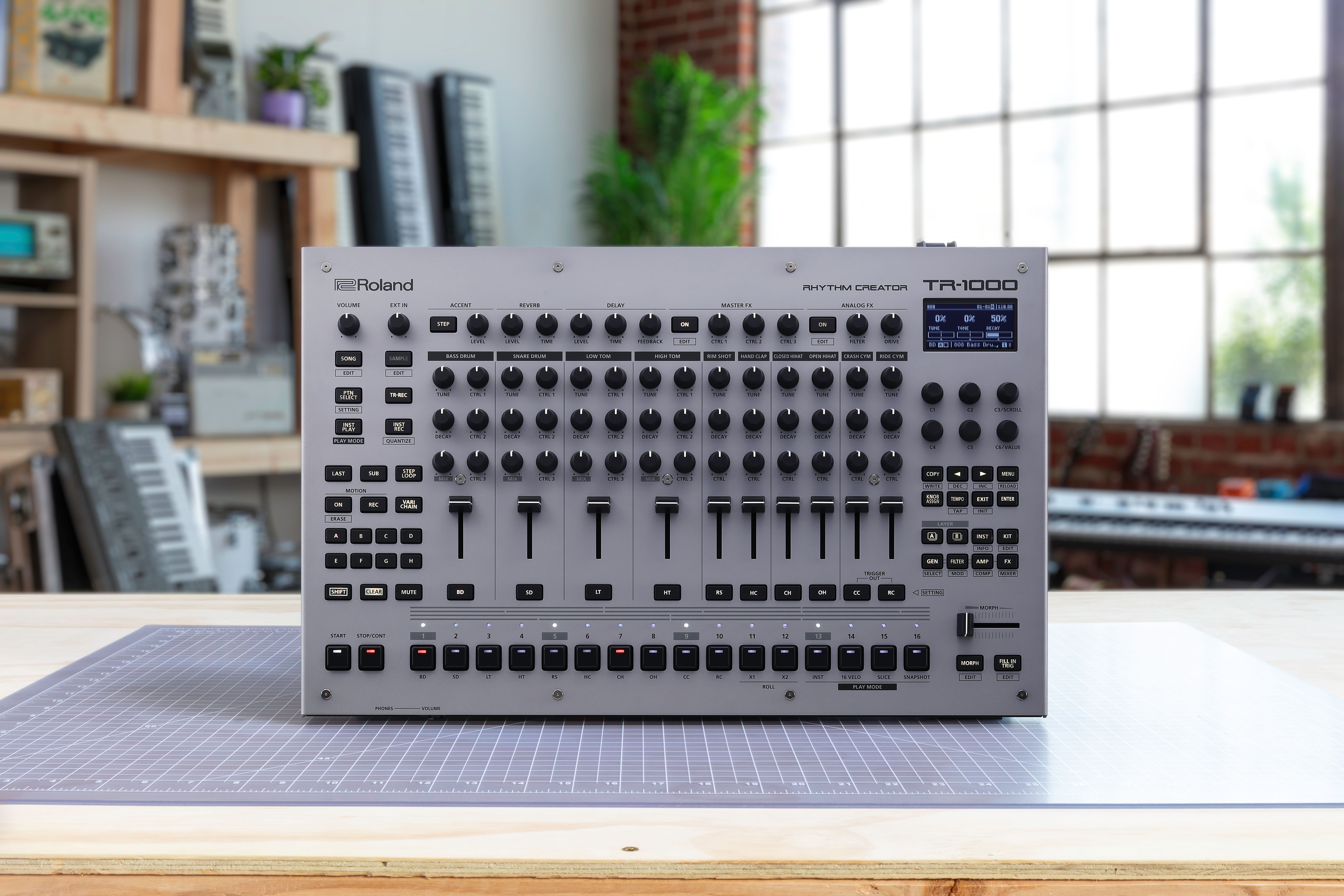After sitting out the analog renaissance for over a decade, Roland just dropped the TR-1000 Rhythm Creator - its first genuine analog drum machine in more than 40 years. The $2,700 beast recreates the legendary TR-808 and TR-909's original analog circuits while packing in modern sequencing tools, marking a dramatic shift from Roland's recent digital-only approach.
Roland finally got the memo. After watching companies like Moog, Korg, and countless boutique manufacturers cash in on the analog revival while they pushed digital alternatives, the legendary drum machine maker is back with something purists have been demanding for decades.
The TR-1000 Rhythm Creator isn't another digital recreation or cloud-based subscription play. This is Roland returning to its roots with genuine analog circuits that recreate the magic of the TR-808 and TR-909 - the machines that literally defined electronic music.
Unlike Roland's recent attempts to capitalize on nostalgia through digital technologies like the Zen-Core engine and ACB modeling, the TR-1000 goes analog-first. It faithfully recreates 16 original analog sound circuits from both legendary machines, then layers on modern conveniences that producers actually want.
The hybrid approach makes sense. While the analog circuits handle the classic kicks, snares, and hi-hats that made the 808 and 909 legendary, Roland adds digital ACB sounds, FM percussion, PCM samples, and comprehensive sampling tools for time-stretching loops and chopping breaks. If you can make a percussive sound, Roland's crammed the capability into this imposing gray box.
The company doubled down on analog authenticity by including a stereo analog filter and drive section for adding grit and creating buildups. More importantly for working producers, the front panel is loaded with knobs, buttons, and faders - suggesting less menu diving than Roland's typically complex modern instruments.
But this authenticity comes at a price. The TR-1000 costs $2,699.99, putting it squarely in professional territory. That's not casual hobbyist money, but Roland's betting it's actually reasonable given the alternatives. A functioning vintage TR-808 or TR-909 easily runs $5,000+ on the secondhand market, making the TR-1000 look almost affordable by comparison.
The timing feels deliberate. While Roland spent the last decade pushing subscription services and digital modeling, the analog synth market exploded around them. Companies like Behringer proved there's massive demand for authentic analog recreations at reasonable prices, while boutique manufacturers showed professionals will pay premium prices for genuine analog circuits.












